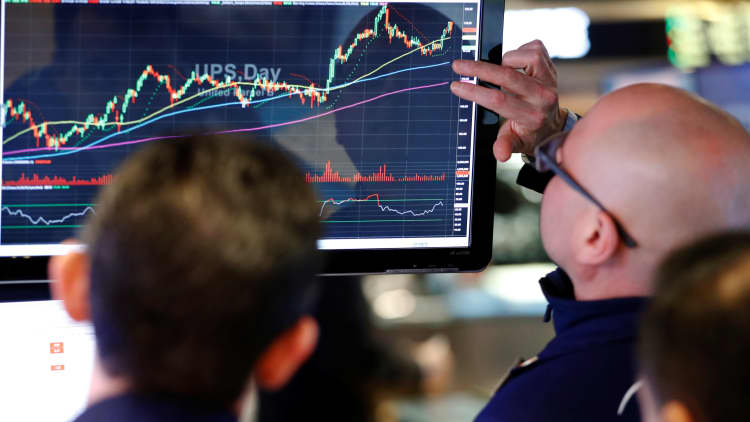
European fund management houses have been named and shamed in a report by an influential investor advocacy group which has sought to expose managers who demand high fees but closely track their funds' underlying benchmarks.
Of the 1,013 funds examined, 165 performed as "potential closet index funds" between the period from 2009 – 2014, according to the research by Better Finance, details of which were first published in the Financial Times on Sunday.
The investigation followed on from the results of an investigation announced by the regional watchdog, the European Securities and Markets Authority (ESMA), in March 2016 which alleged that up to 15 percent of equity funds across the continent could be potential closet indexers. However, the regulatory body refused to name the funds concerned, prompting Better Finance to attempt to replicate the inquiry.
The advocacy group used identical parameters to ESMA to determine the "potential" closet trackers, namely whether funds had less than 60 percent active share and 4 percent tracking error. The first measure evaluates how differently a portfolio's holdings differ from the benchmark's while the second measure looks at the difference in returns.
Guillaume Prache, managing director at Better Finance, told CNBC on Monday that the key goal was to exactly replicate the study and disclose all the funds analyzed to avoid "leaving fund investors in the dark." He confirmed that so far none of the funds investigated had engaged with Better Finance on the results but "we welcome any additional disclosures and analyses that can better inform fund investors about closet indexing."
Among the names, behemoths with many billions of investor dollars under management including Amundi, Fidelity International, Henderson, JPMorgan Asset Management (JPMAM) and Schroders, who offered varied responses to enquiries from CNBC on Monday.
Schroders questioned the accuracy of the data and encouraged investors to use a broader set of measures to assess the level of active management, as well as examine fund performance on the longer-term basis towards which they are geared. JPMAM described active share as a "useful, if one dimensional" risk measure and highlighted the index outperformance of their equity funds listed in the report over three and five year periods. Fidelity noted that the average active share of its fund range is 74.3 percent, "significantly above the 60 percent threshold, which we believe is highly active for the considerable size and array of assets we run," and concurred with Schroders and JPMAM's arguments that a broader set of factors should be assessed.
Furthermore, the spokesperson from Fidelity added, "The data used to compile the list is looking at the period from 2009-2014. This would include the period immediately after the financial crises and an industry-wide pullback in investor risk appetite. With liquidity a prime concern, small-cap positions were cut back with the effect of reducing active share levels. It is also important to note that 95 percent of the assets in the funds listed are held by institutional or professional investors looking for specialist access to thematic or niche sector specific investments. These types of funds often use large-cap indices and invest in smaller number of companies, resulting in a lower active share."
Both Henderson and Amundi declined to comment.
'Third wave' for the industry
The revelations increase the pressure on the active management industry at a time when the bleed of investor money out of its funds and into passive continues apace. While passive assets under management increased by 18 percent in 2016, actively managed assets only edged up by 4 percent, according to data from Morningstar.
Which is why now is the time for a "third wave" of the fund management industry, asserted David Stubbs, Global Markets Strategist at JPMAM, speaking on CNBC's Squawk Box on Monday.
"Now you have the retaliation against passive ... In my view active managers such as our own have developed active funds that aim to beat passive, I call them passive killers," explained Stubbs.
The "passive killers" are actively managed funds with an intentionally low active share but which charge lower fees than traditional active funds. They often aim to match sector and style characteristics to the benchmark but then seek to take lots of small "overweight" and "underweight" positions among the individual stock names with a goal of generating 50 – 100 basis points of outperformance (alpha in industry parlance) per year.
"You're getting maybe 50, 60, 70 basis points a year but over 25 or 30 years as your core holding, that's real money," he argued.
The appeal of these strategies relative to passive is that there is the expectation of outperformance.
"Passive does the opposite, you get the benchmark minus the fee, you lock in underperformance with passive," he added.
Despite many commentators describing the year ahead as one that could provide more opportunities for active managers to shine as the performance of individual stocks diverges more than in recent years given changing macro and market dynamics, Stubbs describes the advent of both passive funds and "passive killers" as a permanent change in asset managers' offerings.
"I don't think that masks the change in the fund offering … Passive isn't going anywhere and nor should it."


